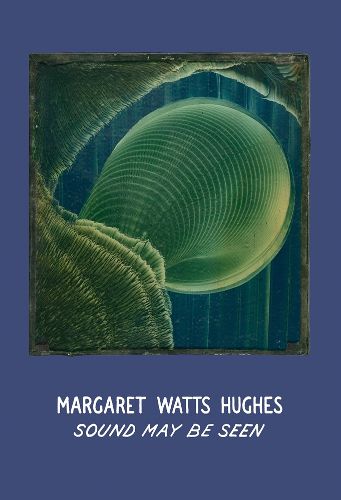Readings Newsletter
Become a Readings Member to make your shopping experience even easier.
Sign in or sign up for free!
You’re not far away from qualifying for FREE standard shipping within Australia
You’ve qualified for FREE standard shipping within Australia
The cart is loading…






Ethereal and enigmatic glass slides preserve the resonance of Hughes' voice in rippling, organic compositions
The acclaimed Welsh singer and philanthropist Margaret Watts Hughes (1842-1907) was one of many inventors of her day fascinated by the visual documentation of sound. Her "eidophone" comprised a tube attached to a chamber covered in rubber, or "diaphragm." Hughes covered a glass slide with grains of sand or coarse pigment, then saturated it with water or milk. By singing into the device, the vibrations of her voice would etch out patterns onto the disc: an artistic rendering of the scientific principle of standing-wave resonance. Her "Voice Figures," as she called them, ranged from primitive patterns to designs resembling flowers, seashells and other natural phenomena. While Hughes valued her discovery for both its scientific and spiritual implications, leaders of the Theosophical movement saw her work as a means of making visible the invisible world. Sound May Be Seen presents selections from Hughes' original 1891 publication of the "Voice Figures" and a rare surviving set of her glass slides, alongside contemporary reactions to her captivating and ultimately enigmatic work.
$9.00 standard shipping within Australia
FREE standard shipping within Australia for orders over $100.00
Express & International shipping calculated at checkout
Ethereal and enigmatic glass slides preserve the resonance of Hughes' voice in rippling, organic compositions
The acclaimed Welsh singer and philanthropist Margaret Watts Hughes (1842-1907) was one of many inventors of her day fascinated by the visual documentation of sound. Her "eidophone" comprised a tube attached to a chamber covered in rubber, or "diaphragm." Hughes covered a glass slide with grains of sand or coarse pigment, then saturated it with water or milk. By singing into the device, the vibrations of her voice would etch out patterns onto the disc: an artistic rendering of the scientific principle of standing-wave resonance. Her "Voice Figures," as she called them, ranged from primitive patterns to designs resembling flowers, seashells and other natural phenomena. While Hughes valued her discovery for both its scientific and spiritual implications, leaders of the Theosophical movement saw her work as a means of making visible the invisible world. Sound May Be Seen presents selections from Hughes' original 1891 publication of the "Voice Figures" and a rare surviving set of her glass slides, alongside contemporary reactions to her captivating and ultimately enigmatic work.